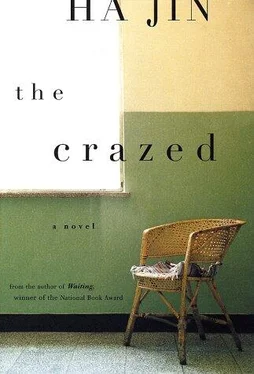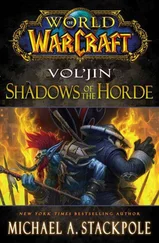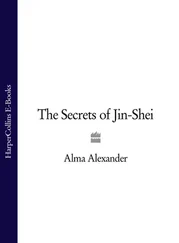On the way I noticed there were more police in town today. Their green vans and motorcycles with sidecars perched at the mouths of alleys and at street corners. One man held a walkie-talkie, though none of them seemed armed. The word was that some students at Shanning Teachers College planned to demonstrate downtown, so the police were stepping up security.
The exhibition differed from what I had expected. The hall couldn’t serve properly as a gallery, not providing enough wall space for all the paintings. And dozens of screens were set up in the middle of the hall for some smaller pieces, which, hung on the green or sky-blue silk, looked strange, even sloppy — the colors of the backdrop interfered with those in the paintings. Though three of the artists in this group were famous as master painters of animals, there were fewer visitors than working staff members at the show.
Facing the entrance was a piece over thirty feet long horizontally, entitled A Thousand Chickens, which presented a scene on a poultry farm. Hundreds of chicks with yellow, fluffy down had been arranged to welcome visitors. I was not impressed by it because all the chickens looked identical, as if printed with the same mold. Moving counterclockwise, I went through paintings of country life: peasants, animals, vegetables, tractors, plows drawn by buffaloes, fields of crops, waterwheels, a pond of ducks, boats laden with splashing bass, even peacocks and peahens. Then came landscapes and seascapes, some of which were so coated with indigo and brown that they appeared muddy.
I was more interested in people than in scenery and animals, so I stayed longer in front of the human figures. I stood for a good while before a painting of a Uigur girl, who couldn’t have lived in the South. The artist must have done this piece on a copying-from-life trip to the Northwest. In it the girl in a tight vest danced wildly with her numerous braids flying. Her movement and her supple limbs were well unified, pivoting from her slender but sturdy waist, below which a saffron skirt was swirling into a canopy. One of her heels kicked backward knee-high. Her lovely calves were slightly pink, gleaming with a soft sheen. I liked her long lashes best, which almost shaded her naughty eyes. There was a kind of fervent loveliness that illuminated this girl, who made me think of my fiancée. Meimei usually seemed carefree, and her insouciance gave her a peculiar charm; yet beneath her casual appearance was the fire fueled by her determination to achieve. What’s more, she always liked to have things her way, right or wrong, but that was all right with me. Ever since we got engaged, whenever I saw a pretty woman, I couldn’t help comparing her with my fiancée. The habit was weird, but too ingrained for me to outgrow.
I lingered in front of the Uigur girl for ten minutes solid, until I stepped closer and murmured with my nose almost touching her knee, “I love you.”
“Don’t touch it!” shouted a sharp female voice. I spun around and saw a fiftyish woman, her fat rump resting against a metal-legged desk, pointing her forefinger at my face. Several people paused to look at me.
I grasped the front of my shirt and gasped, “Goodness, what a fright you gave me!”
“You want to pay a fine?”
“No, no, I didn’t touch anything, just wanted to study it closely.” Hot-faced, I raised both hands with the palms toward her and backed away.
Absently I passed through the next three sections. Then in the corner of two screens I came on a piece called A Poet, with the subtitle No, Not in the Presence of Others. This painting fazed me. Viewed from a distance of ten feet, the human figure in it resembled a scarlet rooster. If the title had not been given, I could hardly have made out what this was about. The piece was vertically long and presented a tall, emaciated man in a tattered cloak, the end of which flapped in the breeze. Beyond him snaked a brook, along which a few people were sauntering, fishing, practicing tai chi, or blowing bamboo flutes, and two women were scrubbing laundry on flat stones. With his neck stretched, the poet seemed to be yearning to chant something, but unable to bring it out. A huge earring hung from his earlobe, casting on his throat an elongated shadow, which reminded me of a noose. A half-transparent mask almost shielded his nose and mouth. His shifty eyes and hollowed cheeks suggested a fearful ghost rather than a man. This painting made me wonder whether there had been an oversight on the part of the authorities that had allowed it to be included. Quickly I turned away.
When I reached the end of the exhibition, ready to head for the door, I came across a broad piece entitled A Hundred Donkeys, which served as the finale. In it many donkeys, large and small, stood on grassland. They were in various postures: some were grazing, some touched each other’s necks and
muzzles, and a few still carried wicker baskets. Several mother donkeys held their bodies still to suckle the young; their teats were wizened, almost invisible. The grown-up donkeys all kept their heads low, including those that were not browsing. Many of them had downcast eyes, which darkened with shyness and modesty. Their legs looked vigorous but fragile. In the right upper corner of the piece there were a few lines of verse serving as a caption. I stepped sideways and recognized the meaning of the poem. It read:
They endure humiliation
And bear the heaviest loads.
Unafraid of long trips
They tread the roughest roads.
At first I was touched by these words, which seemed to provide an allegorical focus for the painting. They emphasized the virtue of endurance and silent self-sacrifice, a virtue deemed to be a noble quality of the Chinese character. Throughout thousands of years the donkey and the ox had been eulogized as obedient, industrious, cheap to keep, mute, and enduring.
For some reason Mr. Yang’s Genesis story came to mind. How these donkeys differed from that one who begged God to abridge his life span so as to reduce his suffering! Then I remembered that when I turned seven, one summer night, a starving donkey had broken into the tofu mill on the tree farm where my parents worked. A militiaman on patrol heard the noise inside the shed and shouted, “Who’s there? Password!” The dumb animal, frightened, dashed out and ran away. Believing it was a thief and unable to stop it with his command, the man fired his rifle and a bullet struck the donkey down. It bled to death an hour later. The next morning my father helped the kitchen skin the carcass, so the cooks gave him a chunk of the boiled meat to bring home in the evening. That was the first time I had tasted donkey meat, which was delicious. My mother cut it into small cubes and seasoned it with mashed garlic, soy sauce, vinegar, and sesame oil.
Now, standing before the painting and thinking about the caption, I realized how people had humanized animals and animalized human beings. These creatures represented an abnormal species created purely for human needs. If man hadn’t imposed his will on animals or abused his power and intelligence over them, no donkey would ever have kept its head close to the ground, not to mention have worn a humble look like these creatures in the painting. Without human subjugation, donkeys would have eaten grapes, cucumbers, melons, tomatoes, and would have borne nothing on their backs; they wouldn’t have given a damn about the quality of roads. Without the iron shoes, they’d have had soft hooves, too lazy to take any trip. In short, they would have been donkeys as donkeys.
I grew dubious and angry, feeling the painting must be either false or satirical. To some extent I was perturbed by my response to it. This kind of artwork used to touch me easily, but now it had lost its impact because I had begun to look at things with doubtful eyes.
Читать дальше

![Lao Zi - Dao De Jing [Tao Te Ching] (english)](/books/3890/lao-zi-dao-de-jing-tao-te-ching-english-thumb.webp)
![Lao Zi - Dao De Jing [Tao Te Ching] (chinese)](/books/3891/lao-zi-dao-de-jing-tao-te-ching-chinese-thumb.webp)
![Lao Zi - Dao De Jing [Tao Te Ching] (espanol)](/books/3892/lao-zi-dao-de-jing-tao-te-ching-espanol-thumb.webp)







